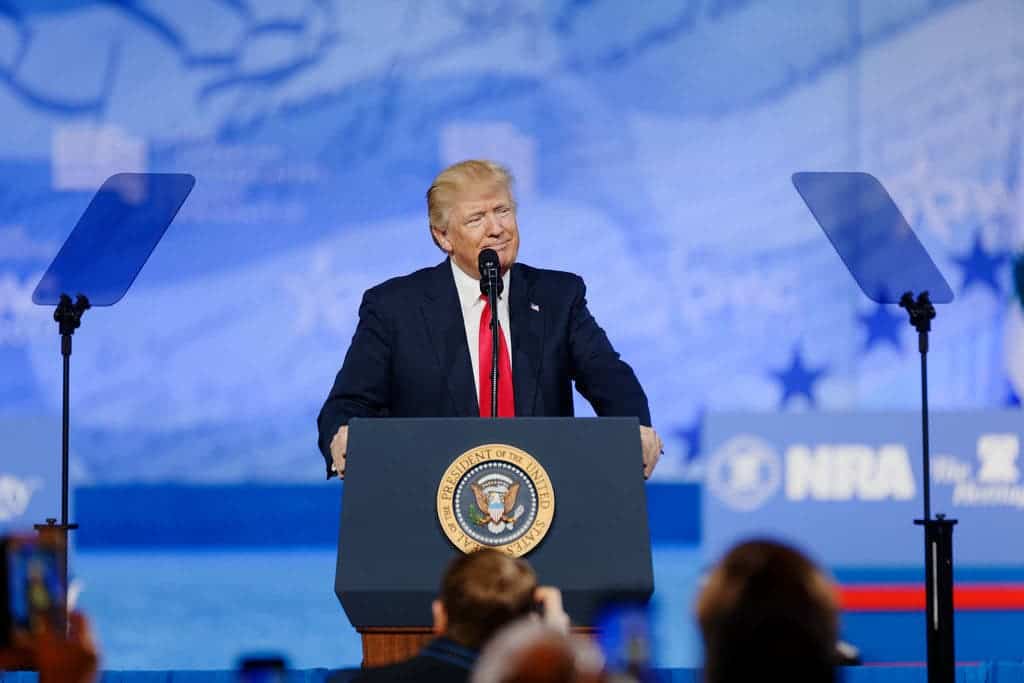The US had to work harder to have a chance at achieving their climate objectives, but now — the country’s going in the opposite direction.

When the Paris Agreement was signed, it was seen as a great success, a platform for international cooperation for a better climate for everyone. With John Kerry as secretary of state, the US was instrumental in the success of the agreement. Kerry fought hard to convince people to sign it and even though the agreement is nowhere near perfect, it was a starting point — realistically, the first starting point we’ve ever had. But without any enforcing mechanism, the pact relies on individual countries to respect their pledges, and it seems that with Trump at the reins, the US has no intention to do so.
Then, the US pledged to reduce greenhouse gas emissions 26-28 percent from 2005 levels by 2025. That would cut about 1.7 billion metric tons from the atmosphere, according to the Environmental Protection Agency (EPA) and would make a significant difference at a global scale. The US is still the second largest polluter in the world. So far, about 30% of that reduction has been achieved more or less naturally, but the rest would require government intervention through an array of regulations called the Clean Power Plan. Even the Clean Power Plan was not ambitious enough to achieve said goals, but it would have been pretty close to it. In the few months since he’s been in office, President Trump has announced a series of measures which go the opposite way and increase the impact the US has on the environment.
David Bookbinder, a longtime environmental lawyer and fellow at the Niskanen Center think tank, has released an analysis which reveals that if the Clean Power Plan is scrapped, emissions from the US will remain virtually unchanged. That’s an extra 1 billion metric tons from what the US planned to do in Paris.
“There were people at the [EPA] hard at work on 2.0 [of climate policy], and they were going to ratchet it up, and it was going to be justified by Paris. It all would have worked, except for that whole election thing,” Bookbinder said. “Now, it’s all over…We’re at square zero.”
Some important Obama reforms are expected to survive the wrath of Trump, but again, it’s important to keep in mind that even the Obama regulations weren’t enough. As the analysis also indicates, it would take a carbon tax for the US to reach its objectives… but that’s something the current administration would probably laugh at. The analysis concludes:
“Our findings support the following conclusions: (1) that collectively all of the Obama-era regulatory measures would only result in a 16% reduction in greenhouse gas emissions from 2005 levels by 2025; (2) that reversing the major Obama-era regulatory measures will result in a 9.5% reduction below 2005 levels by 2025; and (3) that a $40/ton carbon tax would allow the United States to meet the upper end of its 2025 Paris commitment (28% reduction from 2005 levels).”
Here are just a few of the measures Trump has taken against tackling climate change:
- A media blackout at the EPA.
- Keystone XL project was revived.
- Transparency rule for oil companies was overturned.
- EPA boss Scott Pruitt has said CO2 doesn’t cause climate change.
- White House has called climate change spending a ‘waste of money’.
- Trump taking steps to abolish the EPA completely.
Add in the fact that Trump has called climate change a Chinese hoax several times and that his cabinet is basically made of climate change deniers, and the entire picture becomes pretty bleak. Despite pressure from both scientists and the business sector, Trump seems determined not to back down and to send the US to the climate dark ages. At this moment, it’s not clear what this means for the Paris Agreement.


